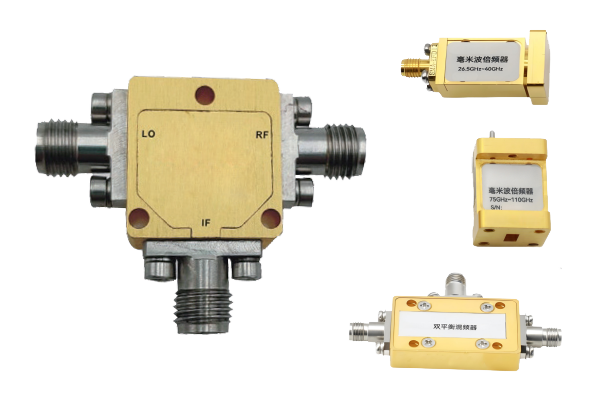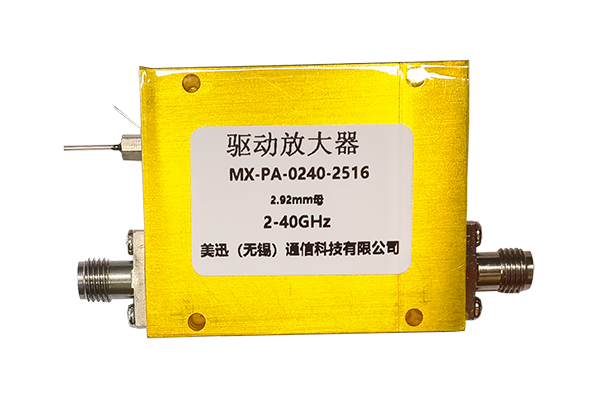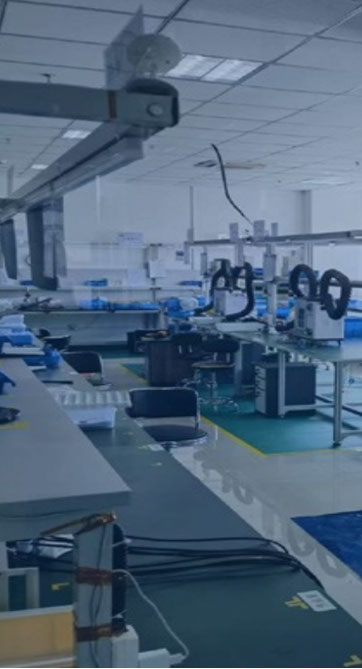
Pin diode technology has risen to prominence as an important building block in high-frequency designs thanks to its native electrical features Their fast toggling behavior plus small capacitance and reduced insertion loss renders them apt for use in switch modulator and attenuator circuits. The basic mechanism behind pin diode switching depends on regulating the device current via an applied bias voltage. The control voltage varies the depletion region dimensions at the junction and thereby alters conductive behavior. Varying the bias voltage facilitates reliable high-frequency switching of PIN diodes with small distortion penalties
PIN diodes are often used in elaborate circuit arrangements where strict timing and control are essential They can function inside RF filters to permit or attenuate targeted frequency bands. Additionally their ability to handle elevated power levels makes them fit for amplifier power divider and generator circuits. Miniaturized high-efficiency PIN diodes now find more applications in wireless and radar technologies
Coaxial Switch Architecture and Performance Review
Developing coaxial switches is complicated and depends on careful analysis of key parameters A switch’s performance is determined by its type frequency range and how well insertion loss is controlled. Minimizing insertion loss and enhancing isolation are primary goals for coaxial switch engineering
Performance analysis requires evaluating key metrics such as return loss insertion loss and isolation. Metrics are assessed using simulation tools theoretical modeling and laboratory measurements. Careful and accurate evaluation is vital to certify coaxial switch reliability in systems
- Coaxial switch analysis typically employs simulation tools, analytical techniques and experimental procedures
- Coaxial switch behavior is sensitive to temperature, impedance mismatch and assembly tolerances
- Innovative trends and recent advances in switch design emphasize metric improvements while lowering size and consumption
Low Noise Amplifier Optimization Methods
Maximizing LNA performance efficiency and gain is necessary to secure exceptional signal quality in applications It necessitates thoughtful transistor selection bias configuration and circuit topology planning. A robust LNA layout minimizes noise inputs while maximizing amplification with low distortion. Simulation and modeling techniques are essential for analyzing the noise consequences of design options. Targeting a small Noise Figure quantifies how well the amplifier keeps the signal intact against intrinsic noise
- Prioritizing low-noise transistors is crucial for optimal LNA performance
- Properly set optimal and appropriate biasing reduces transistor noise generation
- The configuration and topology substantially shape the amplifier’s noise response
Employing matching networks noise suppression and feedback systems refines LNA performance
Radio Frequency Path Routing with Pin Diodes

Pin diode switch implementations yield flexible efficient routing of RF signals in diverse applications They can be switched very fast to allow flexible dynamic routing of RF signals. PIN diodes’ low insertion loss and good isolation preserve signal quality through switching events. Applications often involve antenna switching duplexers and RF phased arrays
Control voltages alter the diode resistance which in turn dictates switching operation. In the open or deactivated condition the device offers large resistance that prevents signal passage. Applying a forward control voltage lowers the diode’s resistance enabling signal transmission
- Additionally PIN diode switches present fast switching low energy use and compact dimensions
Multiple configurable architectures and design schemes of PIN diode switches facilitate complex routing operations. Combining multiple switch elements makes possible dynamic switching matrices enabling flexible routing
Coaxial Microwave Switch Testing and Evaluation

The evaluation assessment and testing of coaxial microwave switches is essential to confirm optimal operation in complex electronic systems. Several influencing factors such as insertion reflection transmission loss isolation switching speed and frequency range determine performance. Complete assessment involves quantifying parameters over diverse operational and environmental test conditions
- Moreover additionally furthermore the evaluation ought to include reliability robustness durability and environmental tolerance considerations
- Ultimately comprehensive evaluation outputs provide critical valuable and essential guidance for switch selection design and optimization for targeted uses
In-depth Review of Noise Suppression in LNA Circuits
Low noise amplifier circuits are central to RF systems for enhancing weak signals and limiting internal noise. The paper provides a comprehensive examination analysis and overview of techniques aimed at lowering noise in LNAs. We analyze investigate and discuss main noise origins such as thermal shot and flicker noise. We also cover noise matching feedback network techniques and ideal bias strategies to mitigate noise. The review highlights recent progress in LNA design including new semiconductor materials and circuit concepts that lower noise figures. By giving a clear understanding of noise reduction principles and practices this article aims to assist researchers and engineers in developing high performance RF systems
Applications of PIN Diodes for Fast Switching

They show unique remarkable and exceptional characteristics tailored for high speed switching uses Low capacitance combined with low resistance produces rapid switching for applications requiring precise timing. In addition PIN diodes display linear voltage response that supports precise amplitude modulation and switching performance. Their versatility adaptability and flexibility position them as suitable applicable and appropriate for a wide array of high speed use cases Examples of deployment include optical communication systems microwave circuits and signal processing equipment and devices
IC Coaxial Switch and Circuit Switching Advances
Integrated circuit coaxial switch technology marks a significant advancement in signal routing processing and handling within electronic systems circuits and devices. These ICs control manage and direct coaxial signal flow providing high frequency capability with low latency propagation and insertion timing. The miniaturized nature of IC technology produces compact efficient reliable and robust designs suitable for dense interfacing integration and connectivity demands
- With careful meticulous and rigorous execution of these strategies designers can obtain LNAs exhibiting excellent noise performance for sensitive reliable systems By meticulously carefully and rigorously applying these methods developers can produce LNAs with superior low-noise amplifier noise performance enabling sensitive reliable electronics By carefully meticulously and rigorously applying these approaches designers can realize LNAs with outstanding noise performance enabling sensitive reliable electronic systems By meticulously carefully and rigorously adopting these practices designers can deliver LNAs with excellent noise performance supporting reliable sensitive systems
- Applications of IC coaxial switch technology span telecommunications data communications and wireless networks
- Integrated coaxial switch solutions apply to aerospace defense and industrial automation sectors
- Consumer electronics audio video systems and test and measurement platforms incorporate IC coaxial switches
Design Tips for Low Noise Amplifiers in mmWave Bands

Millimeter wave LNA design must address elevated signal attenuation and stronger effects of intrinsic noise. At millimeter wave ranges parasitics dominate so meticulous layout and selection of components is essential. Minimizing mismatch and maximizing gain remain critical essential and important for mmWave LNA performance. Choice of active devices such as HEMTs GaAs MESFETs or InP HBTs is crucial to reach low noise figures at mmWave. Additionally furthermore moreover careful design implementation and optimization of matching networks is vital for efficient power transfer and impedance matching. Attention to package parasitics is crucial as they have potential to harm mmWave LNA performance. Implementing low-loss transmission lines along with proper ground plane design is essential necessary and important for reducing reflection and ensuring bandwidth
Modeling Strategies for PIN Diode RF Switching
PIN diodes are vital components elements and parts used throughout numerous RF switching applications. Precise accurate and comprehensive characterization of these devices is essential to support design development and optimization of reliable high performance circuits. Included are analyses evaluations and examinations of electrical voltage and current characteristics such as resistance impedance and conductance. The characterization includes frequency response bandwidth tuning capabilities and switching speed latency or response time
Furthermore moreover additionally accurate model and simulation development for PIN diodes is vital essential and crucial for behavior prediction in RF systems. Several diverse modeling approaches exist such as lumped element distributed element and SPICE models. The choice of model simulation or representation hinges on the specific application requirements and the desired required expected accuracy
High End Approaches for Low Noise Amplifier Design
Developing LNAs involves diligent consideration of circuit topology and components to obtain optimal noise performance. Recent advances in semiconductor tech have unlocked innovative groundbreaking sophisticated LNA design techniques that diminish noise greatly.
Notable techniques include employing utilizing and implementing wideband matching networks incorporating low-noise transistors with high intrinsic gain and optimizing biasing schemes strategies and approaches. Additionally advanced packaging solutions and thermal management approaches are key to cutting noise contributions from external factors. By meticulously carefully and rigorously applying these methods developers can produce LNAs with superior noise performance enabling sensitive reliable electronics
